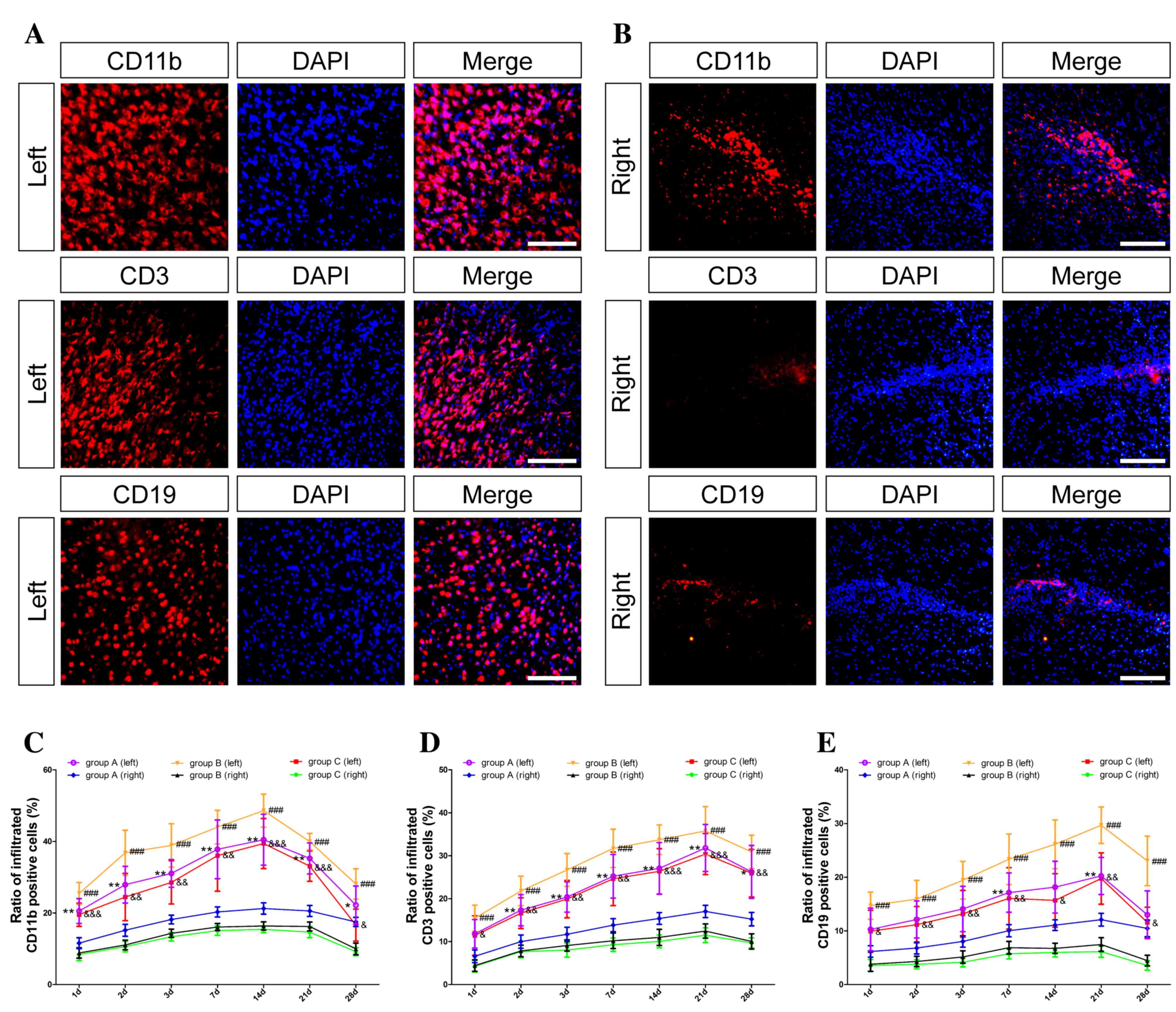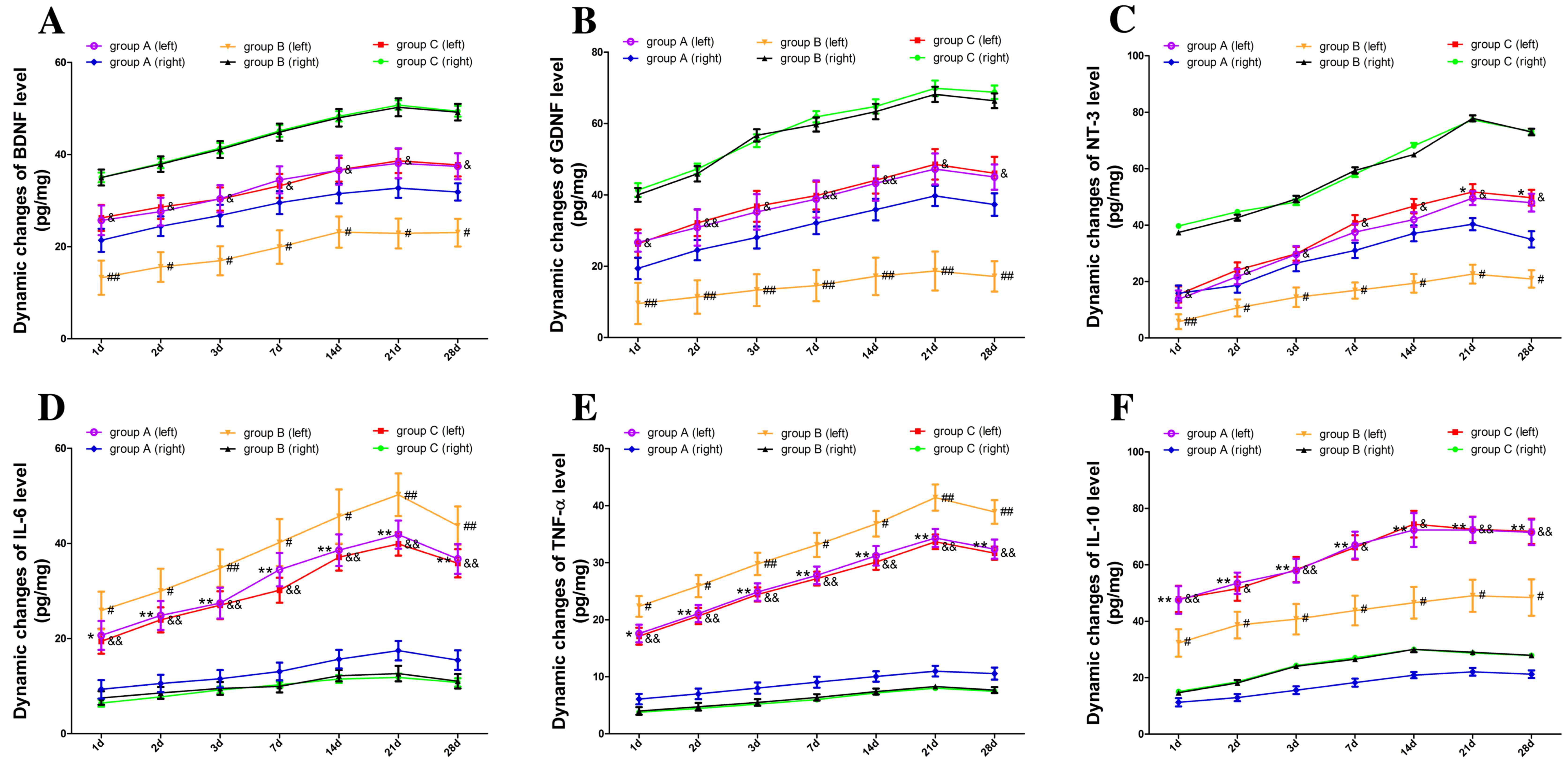Syringe needle skull penetration reduces brain injuries and secondary inflammation following intracerebral neural stem cell transplantation
- Authors:
- Published online on: January 17, 2017 https://doi.org/10.3892/etm.2017.4054
- Pages: 885-890
-
Copyright: © Gao et al. This is an open access article distributed under the terms of Creative Commons Attribution License.
Metrics: Total
Views: 0 (Spandidos Publications: | PMC Statistics: )
Total PDF Downloads: 0 (Spandidos Publications: | PMC Statistics: )
Abstract
Intracerebral neural stem cell (NSC) transplantation is beneficial for delivering stem cell grafts effectively, however, this approach may subsequently result in brain injury and secondary inflammation. To reduce the risk of promoting brain injury and secondary inflammation, two methods were compared in the present study. Murine skulls were penetrated using a drill on the left side and a syringe needle on the right. Mice were randomly divided into three groups (n=84/group): Group A, receiving NSCs in the left hemisphere and PBS in the right; group B, receiving NSCs in the right hemisphere and PBS in the left; and group C, receiving equal NSCs in both hemispheres. Murine brains were stained for morphological analysis and subsequent evaluation of infiltrated immune cells. ELISA was performed to detect neurotrophic and immunomodulatory factors in the brain. The findings indicated that brain injury and secondary inflammation in the left hemisphere were more severe than those in the right hemisphere, following NSC transplantation. In contrast to the left hemisphere, more neurotrophic factors but less pro‑inflammatory cytokines were detected in the right hemisphere. In addition, increased levels of neurotrophic factors and interleukin (IL)‑10 were observed in the NSC transplantation side when compared with the PBS‑treated hemispheres, although lower levels of IL‑6 and tumor necrosis factor‑α were detected. In conclusion, the present study indicated that syringe needle skull penetration vs. drill penetration is an improved method that reduces the risk of brain injury and secondary inflammation following intracerebral NSC transplantation. Furthermore, NSCs have the potential to modulate inflammation secondary to brain injuries.











